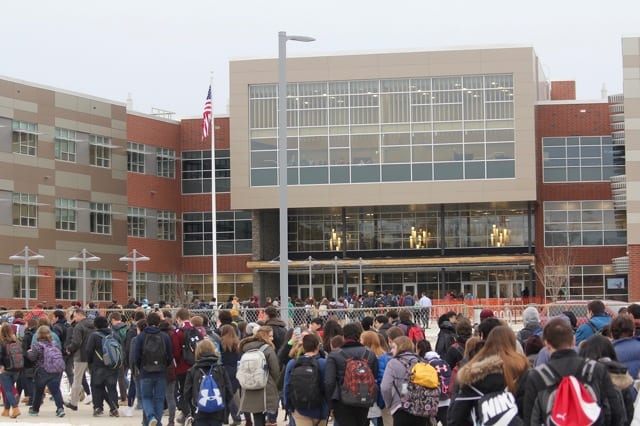State College Area School Board on Monday unanimously voiced support for the plaintiffs in an ongoing lawsuit that aims to reform public school funding in Pennsylvania.
The lawsuit, which began in November and resumed this month, contends that funding for some school districts is so inadequate and imbalanced that the commonwealth is violating its constitution’s provision “for the maintenance and support of a thorough and efficient system of public education,” and its equal protection clause.
Six school districts, four parents and two organizations are plaintiffs in the lawsuit, which was originally filed in 2014.
Pennsylvania ranks 45th nationally in state funding for public schools, providing about 38% of the money spent on education. Local real estate taxes account for much of school districts’ revenues, which means that districts with wealthier populations can raise more money.
In the State College Area School District, local tax dollars account for 79% of funding.
“For districts with relatively low total assessed value compared to the number of students, even high millage rates and increasing taxation may provide inadequate and falling revenue for the district,” the State College school board’s resolution stated. “This funding approach creates vast disparities between high-wealth and low-wealth districts, leading to one of the widest funding gaps in the country.”
Like the plaintiffs and their supporters, including 15 other school districts that have formally voiced support, State College Area’s resolution states that the imbalance means “students across the state lack basic educational supports and services (including adequate school buildings, functional school libraries, current textbooks and curriculum materials, reasonable class sizes and more) and that this deficiency prevents those students from meeting the academic standards set by the state.”
The state generally allocates more funding to lower wealth school districts to close the gap, and the defense argues that in total its funding per student is well above the national average.
State Senate President Pro Tempore Jake Corman, R-Bellefonte, who is among the defendants in the lawsuit, said in a November statement that Pennsylvania ranks in the top 10 for in per-student funding and that the most recent budget increased K-12 education spending by $300 million.
“The General Assembly has always met our constitutional mandate to provide a thorough and efficient system of public education to serve the needs of the Commonwealth,” Corman said.
“The question in this case is not whether Pennsylvania’s system of public education could be better,” he argued in a pre-trial statement. “Any system can be improved. Every year, in fact, the General Assembly passes bills that are aimed at improving the system of public education. But imperfect is not unconstitutional.”
Matthew Kelly, a Penn State College of Education professor who studies school funding, testified for the plaintiffs in November that poorer districts average about $4,800 less per student than their wealthier peers. His analysis found that overall Pennsylvania schools have a $4.6 billion shortfall in adequate funding.
“In the Commonwealth currently, those districts that need the most get the least,” Kelly said.
The lawsuit seeks to have the state’s current funding formula be ruled unconstitutional and replaced with a more equitable system.
For State College school board members, support for the lawsuit is support for equitable education across Pennsylvania.
“I think it’s really important that we work for all students in the state of Pennsylvania to have an equitable and adequate education,” school board member Jackie Huff said.
“It’s not just about districts who aren’t receiving their fair share,” she later added. “No one’s really receiving their fair share in the state. The legislature has the power [to change this], but they’ve chosen not to.”
Added board President Amber Concepcion, “In my perspective this is important, in terms of our commitment to equity as a district, that we care about and prioritize equity for all students in the state of Pennsylvania as well.”



